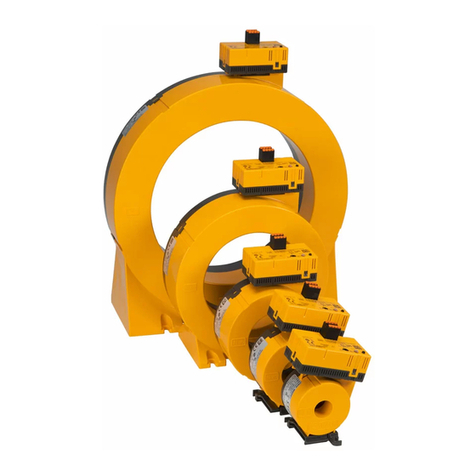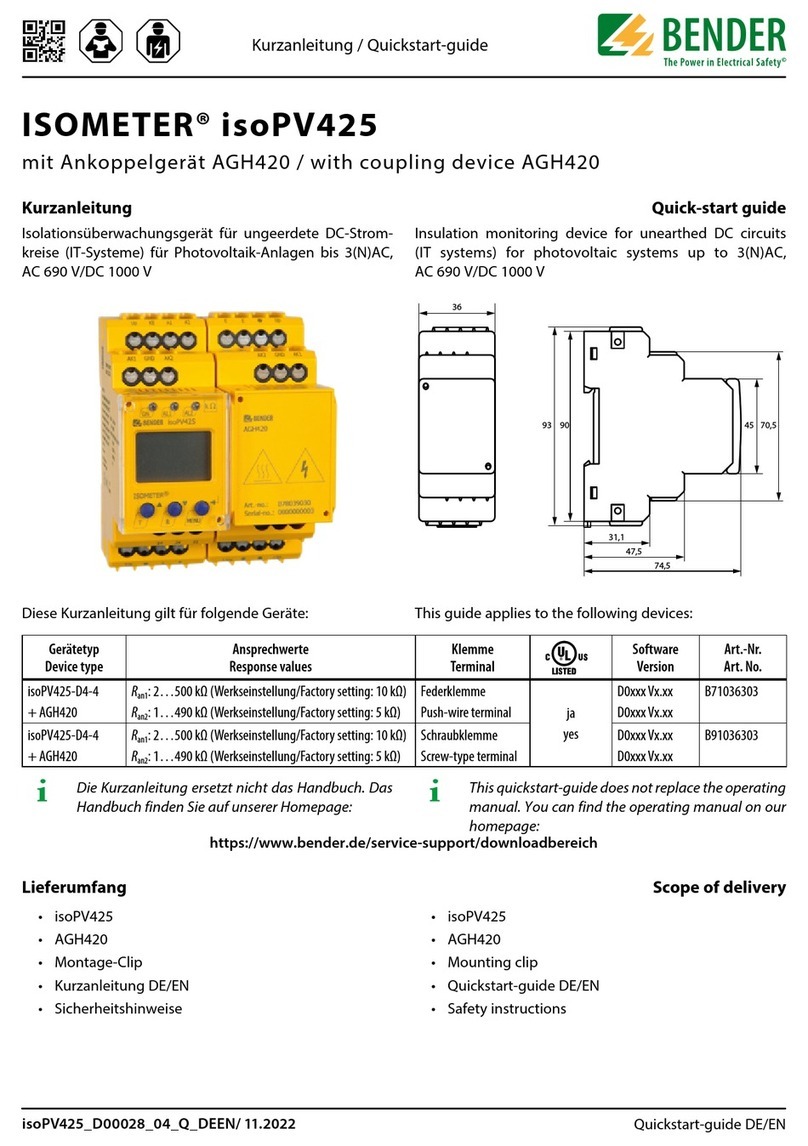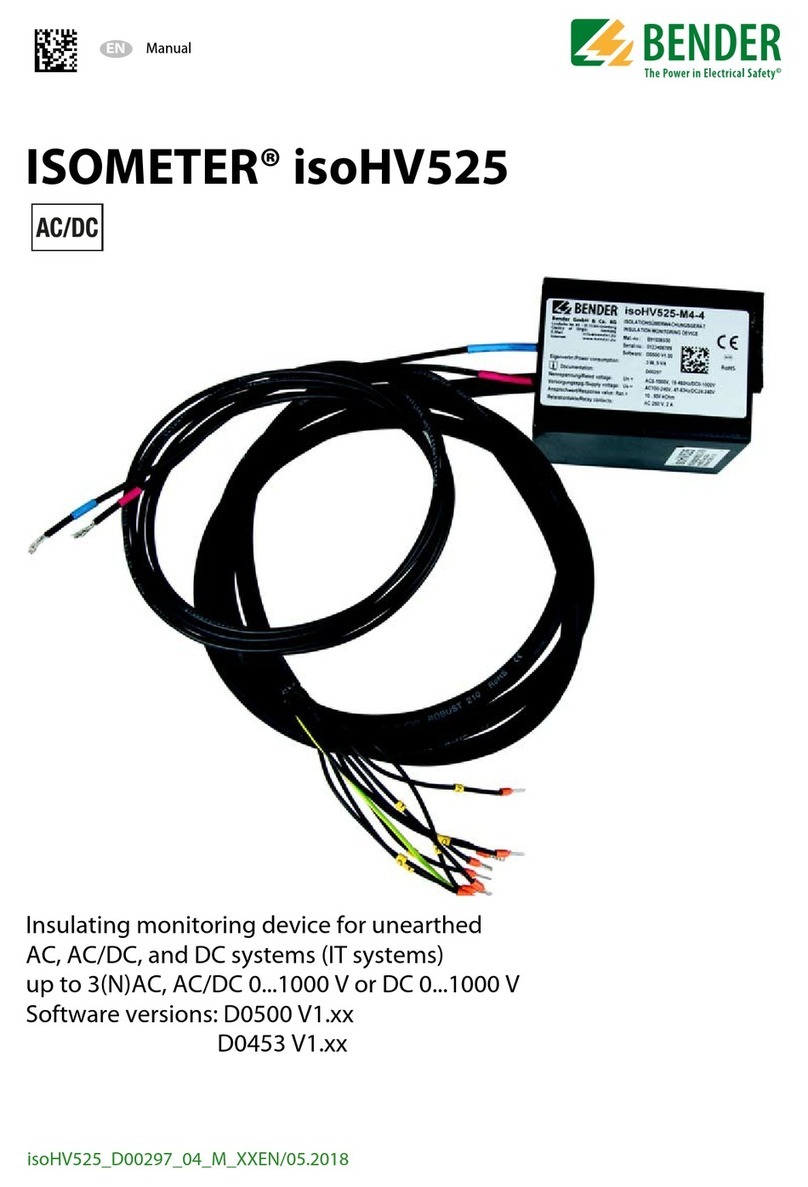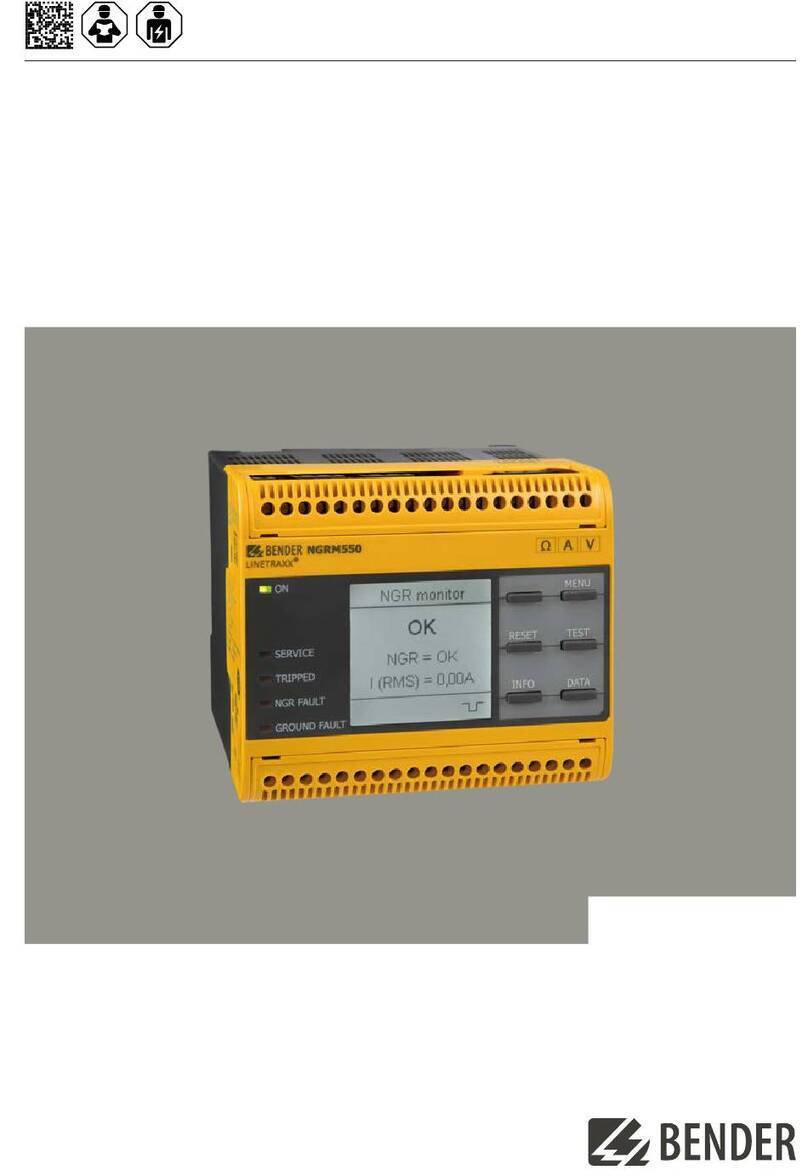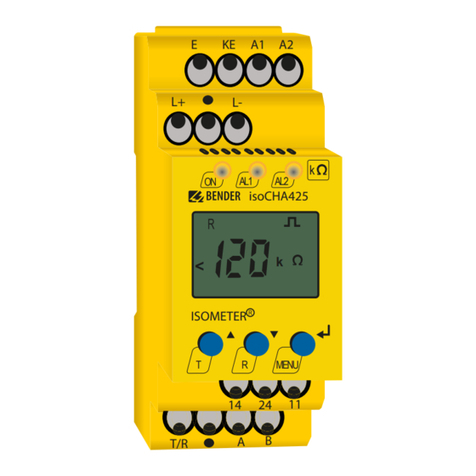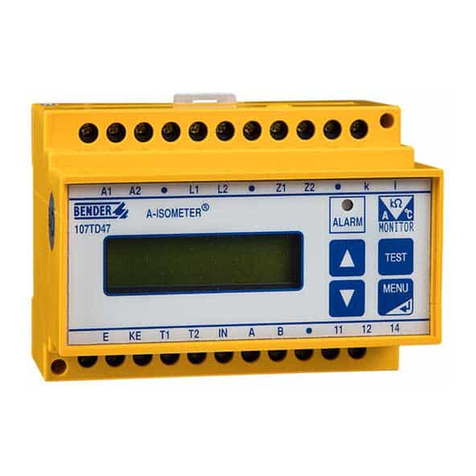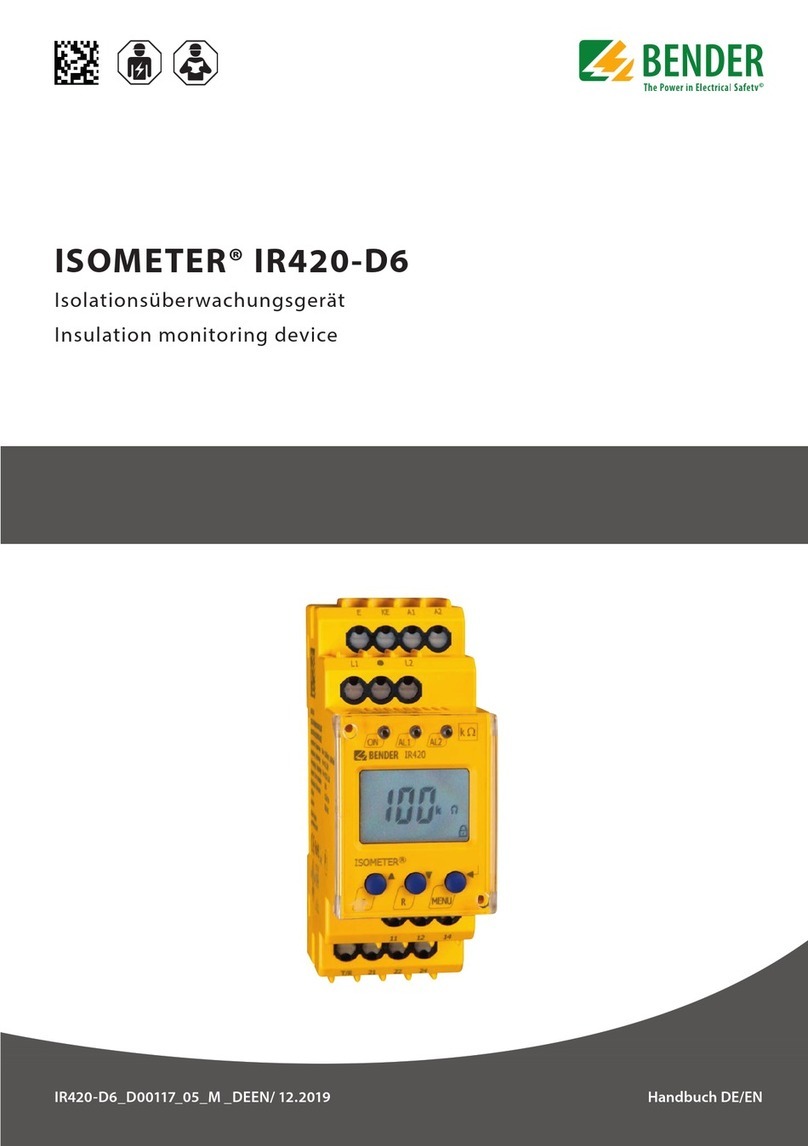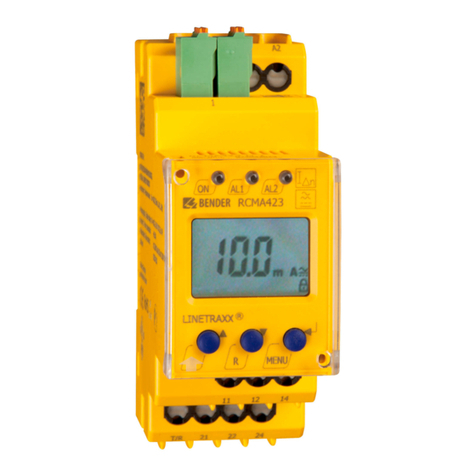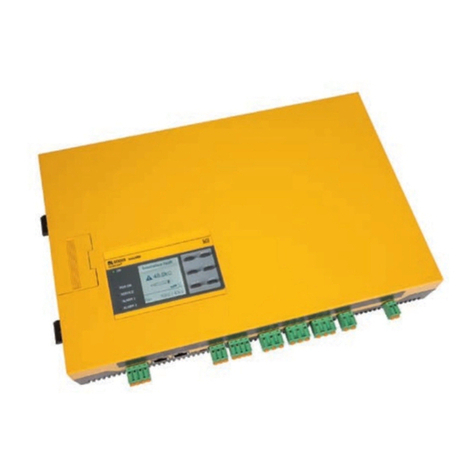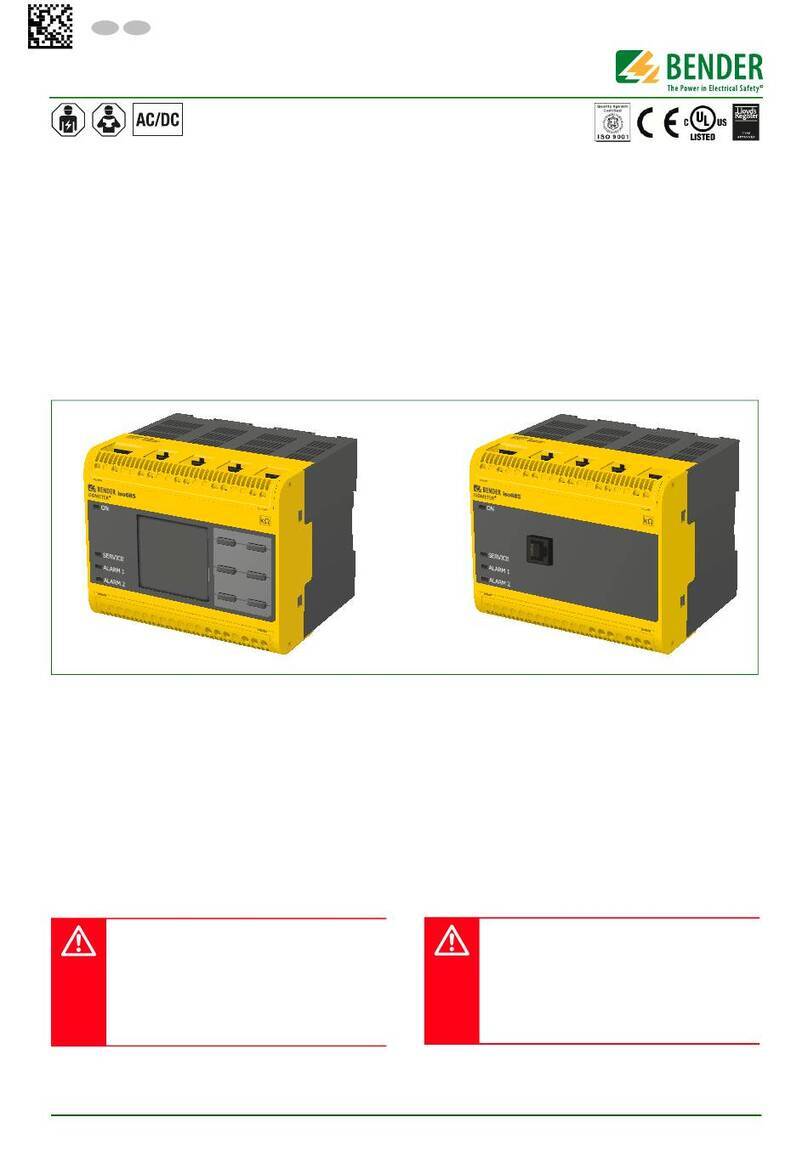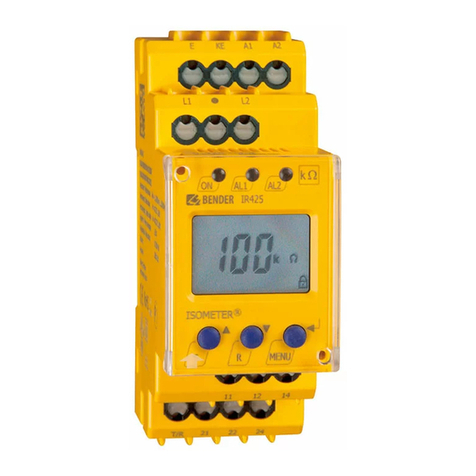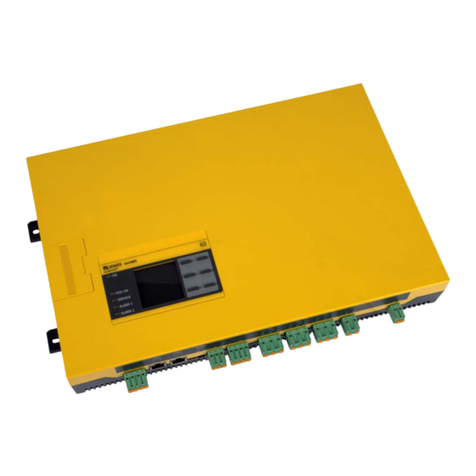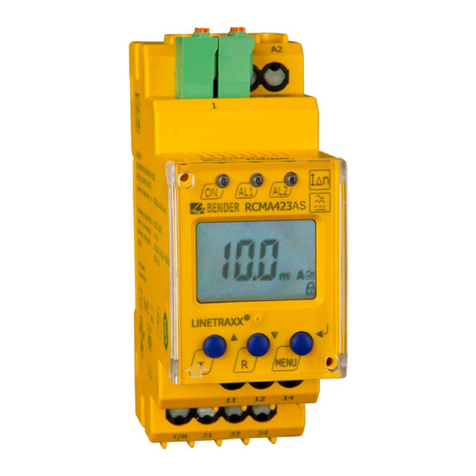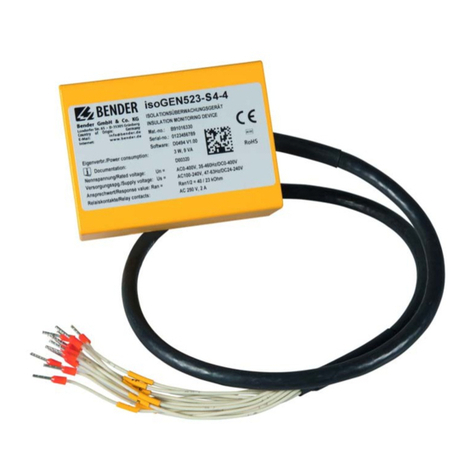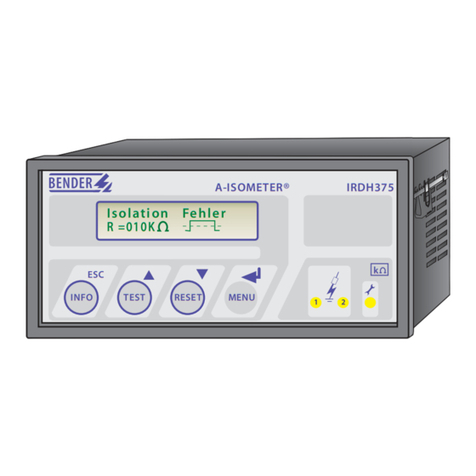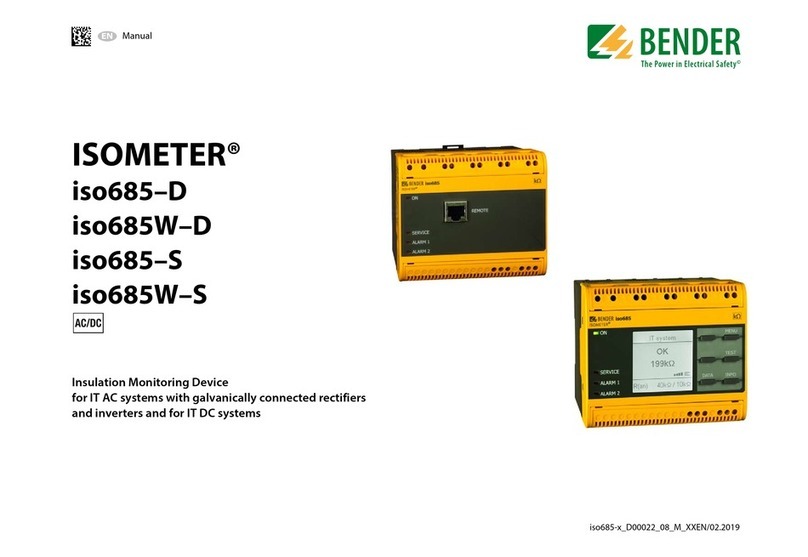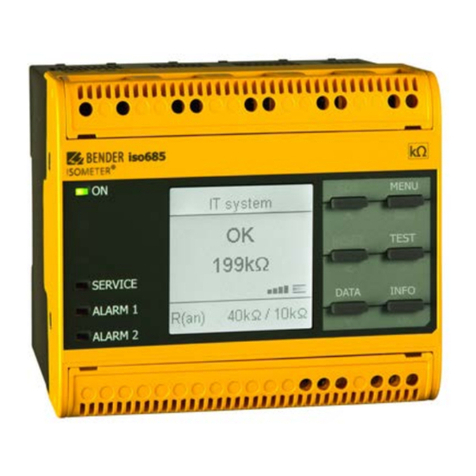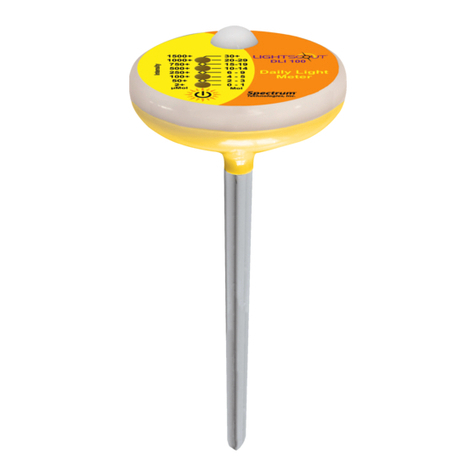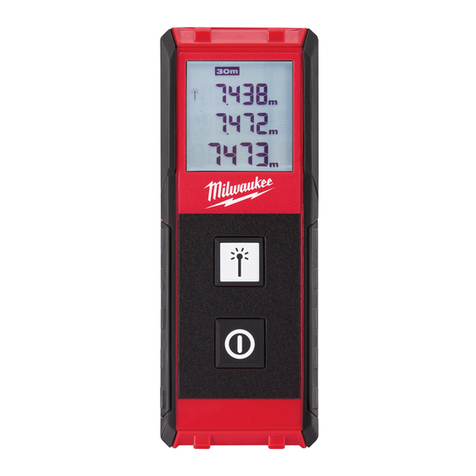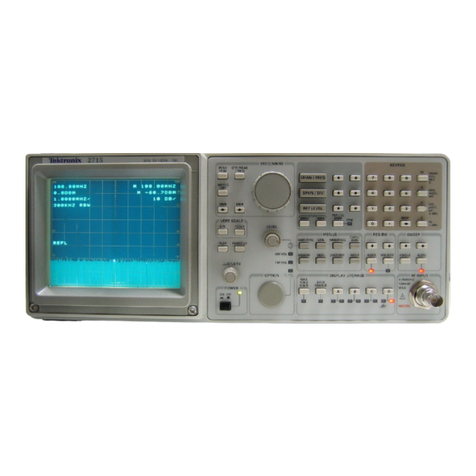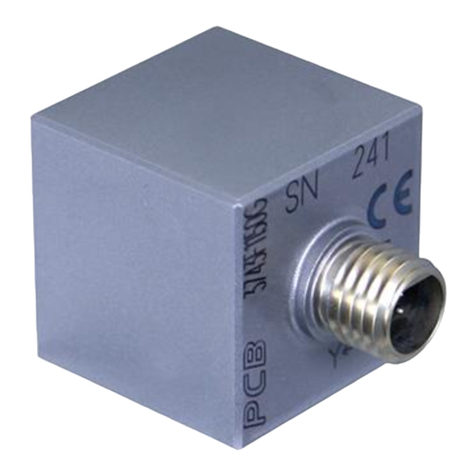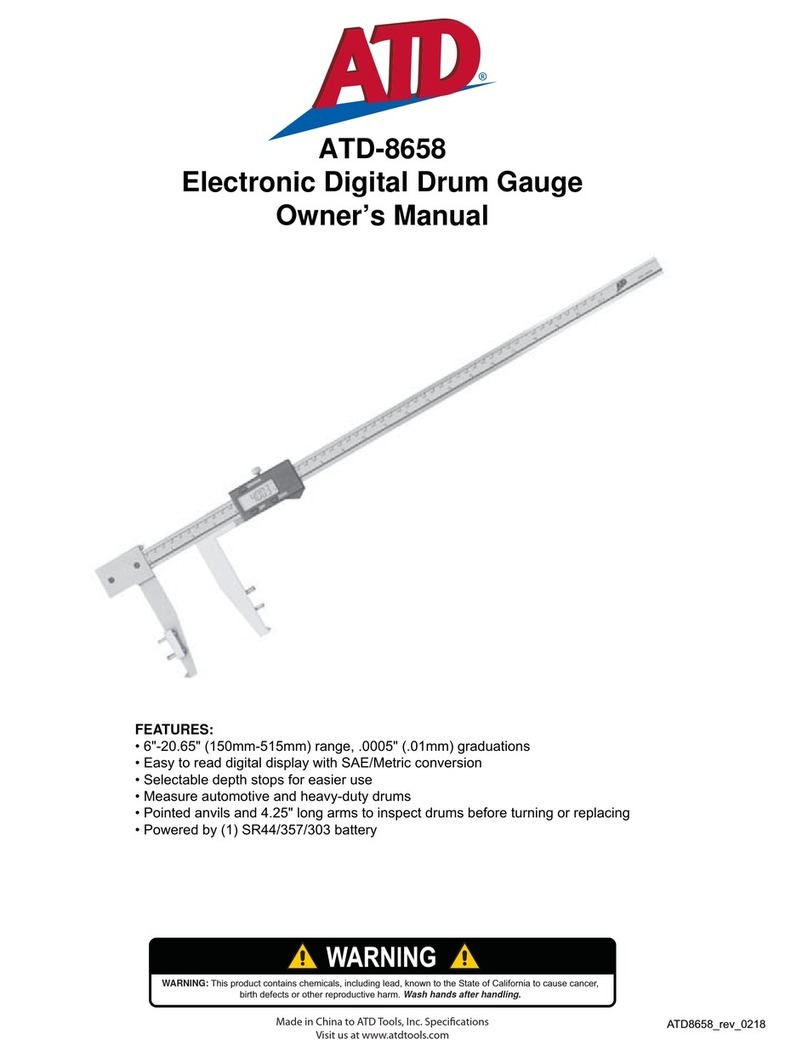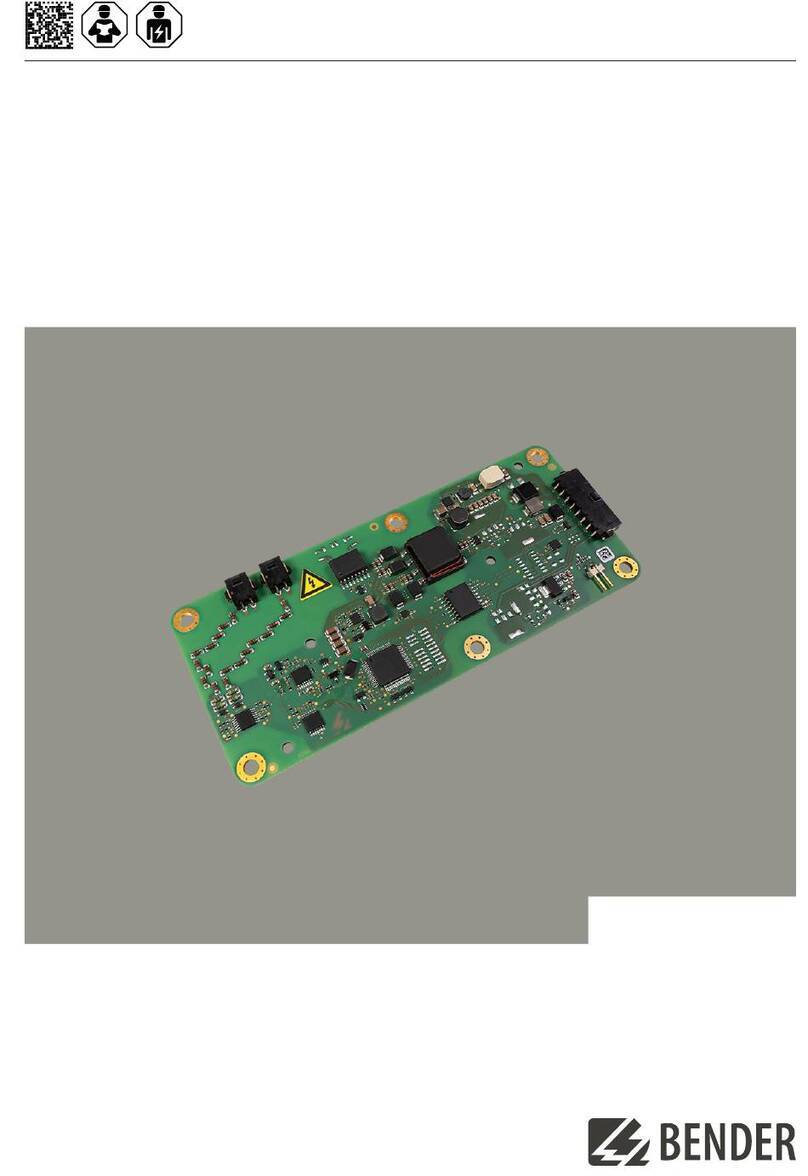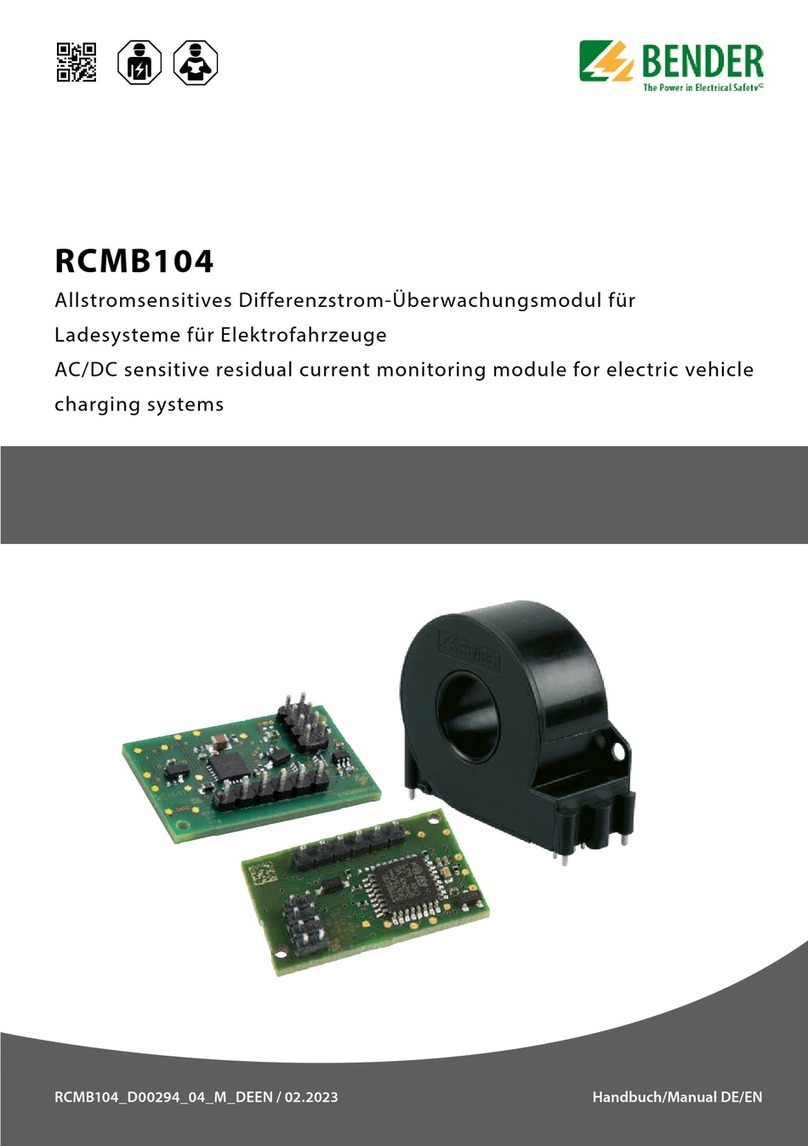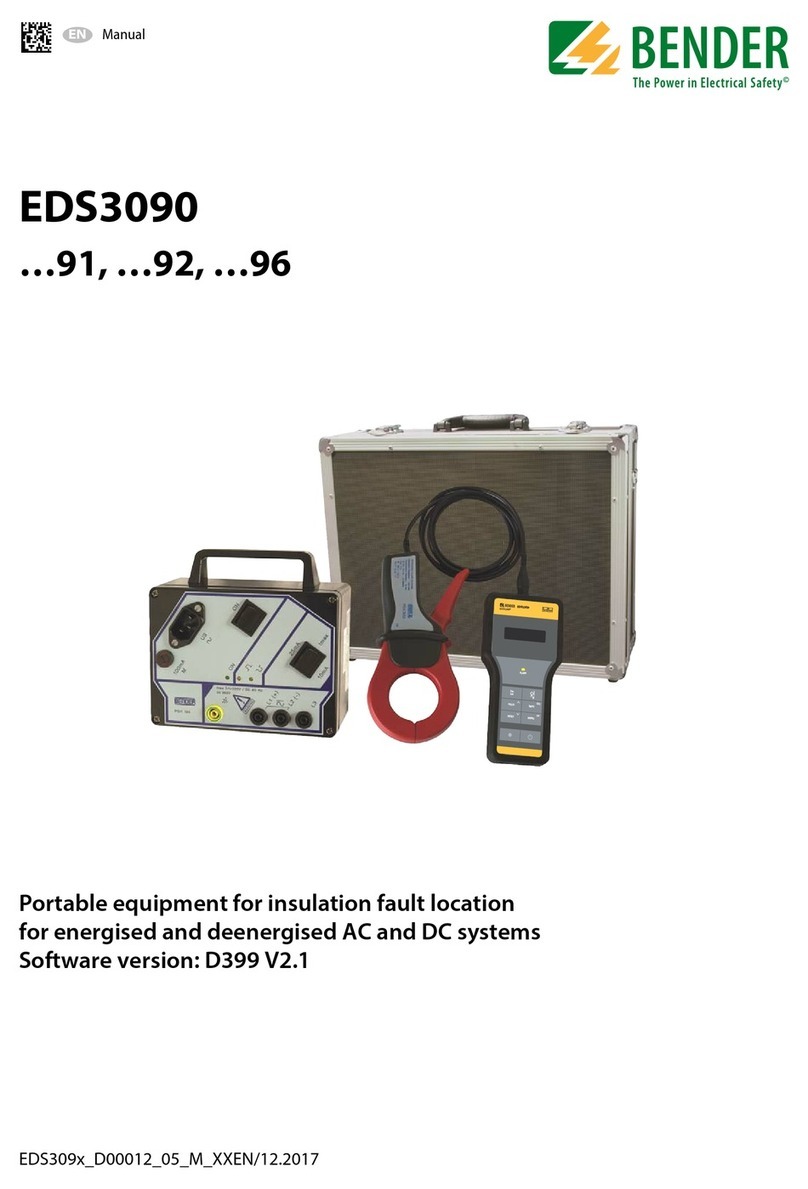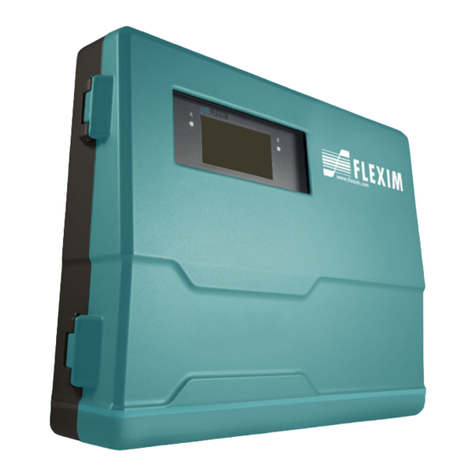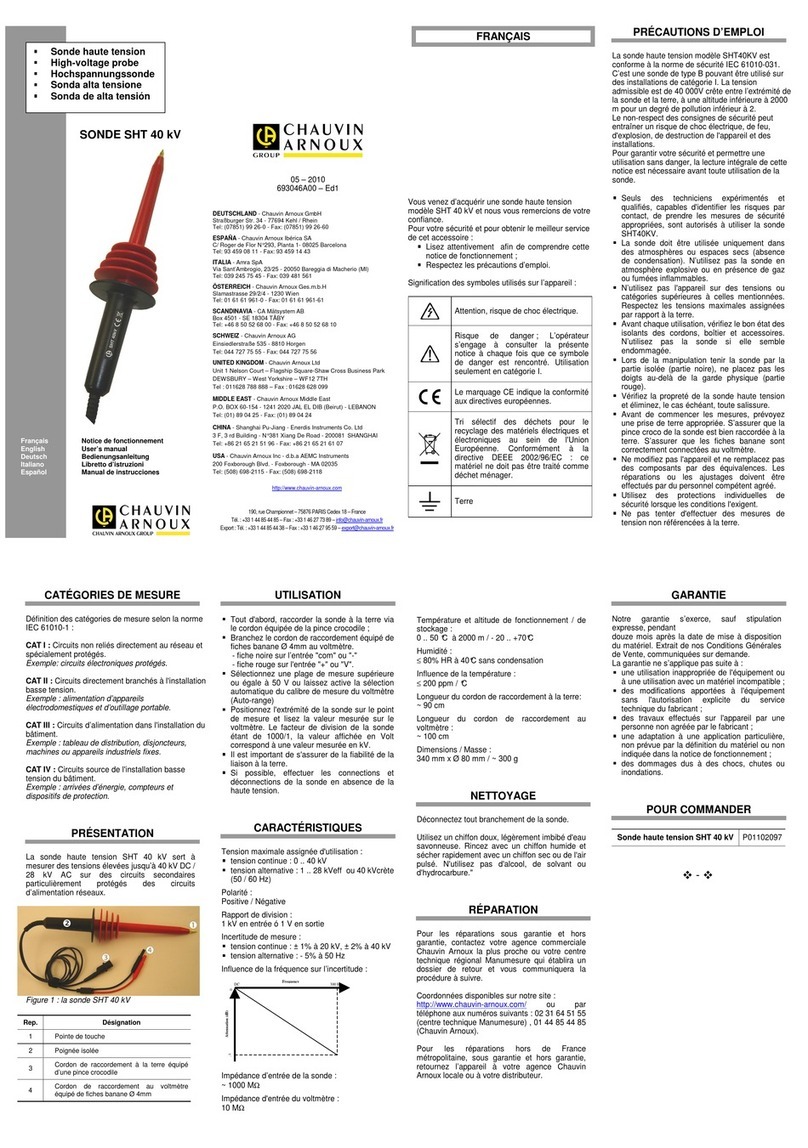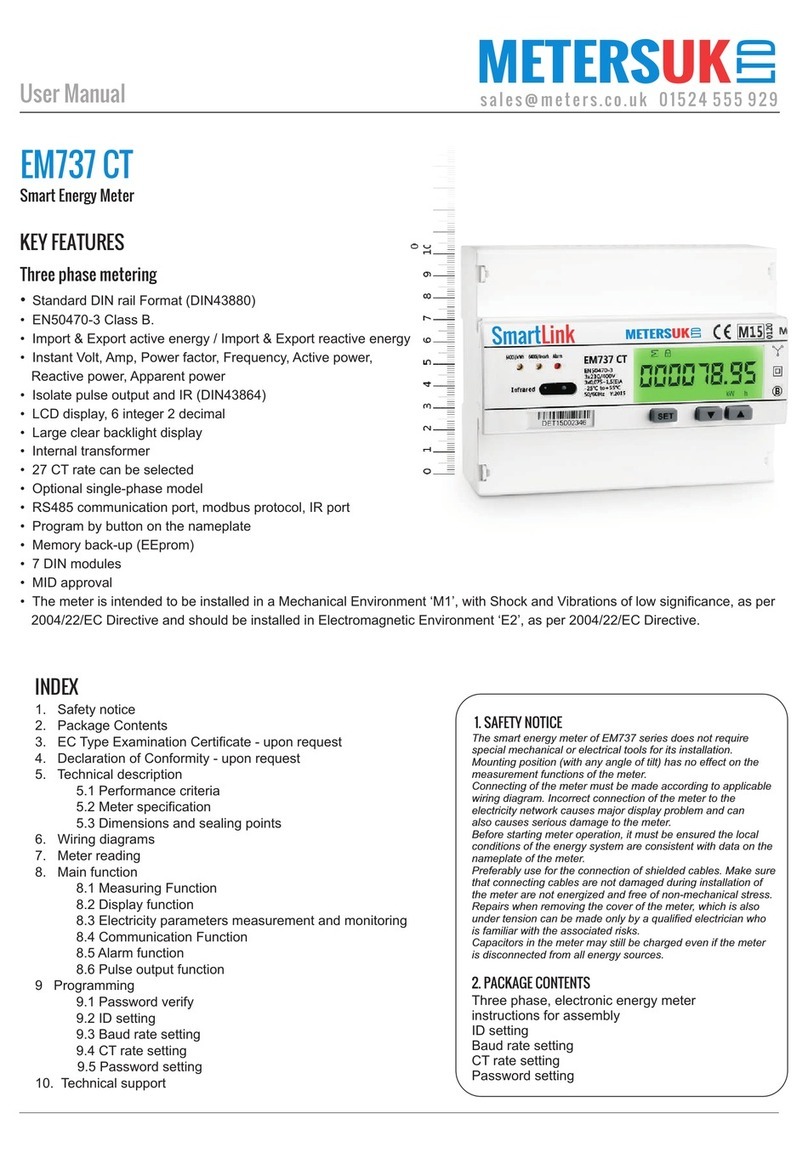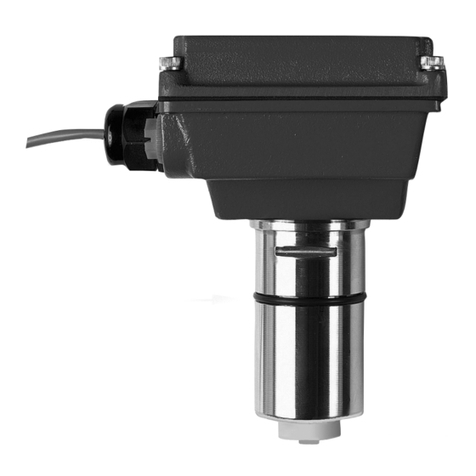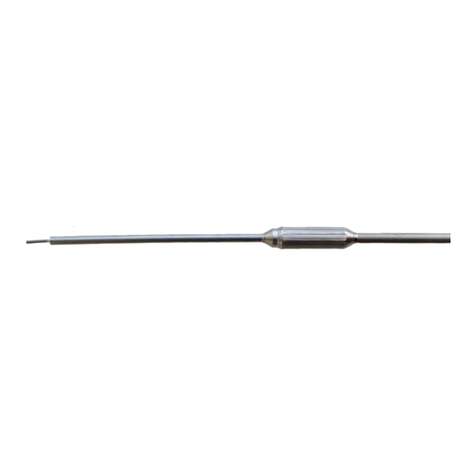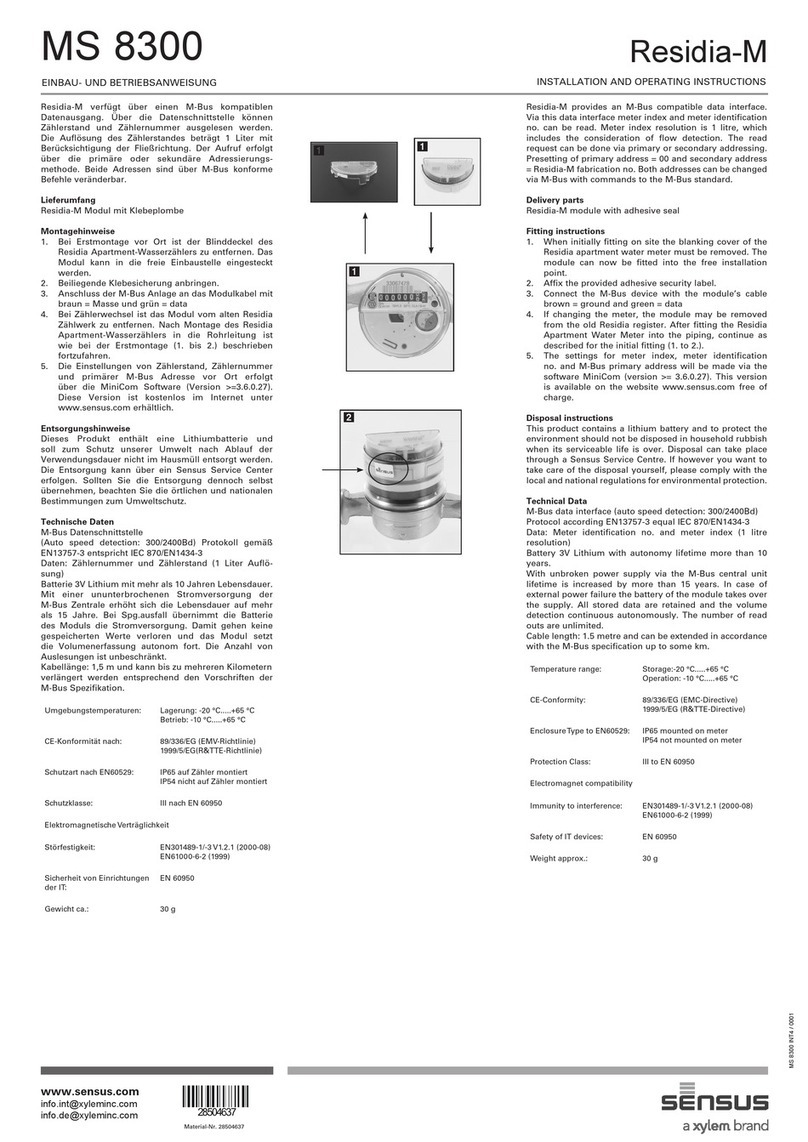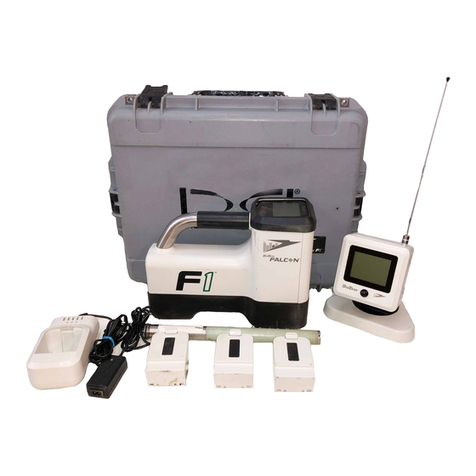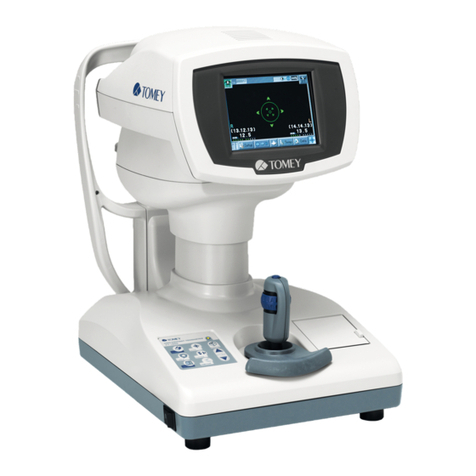
ISOMETER® isoMIL425HV
2 3 Functional description
The ISOMETER® measures the insulation resistance RF and the system leakage capacitance Ce between the
system to be monitored (L1/+, L2/–) and earth (PE). The RMS value of the nominal system voltage Un between
L1/+ and L2/– as well as the residual voltages UL1e (between L1/+ and earth) and UL2e (between L2/– and earth)
are also measured.
From a minimum value of the nominal system voltage, the ISOMETER® determines the faulty conductor 'R %',
which shows the distribution of the insulation resistance between conductors L1/+ and L2/–. The distribution
is indicated by a positive or negative sign preceding the insulation resistance measurement. The value range of
the faulty conductor is ±100 %:
Indication Meaning
–100 % one-sided fault at conductor L2/–
0 % symmetrical fault
+100 % one-sided fault at conductor L1/+
The partial resistances can be calculated from the total insulation resistance RF and the faulty conductor 'R %'
using the following formula:
Fault at conductor L1/+: RL1F = (200 % x RF) / (100 % + R %)
Fault at conductor L2/–: RL2F = (200 % x RF) / (100 % – R %)
Also from a minimum value of the nominal system voltage, the ISOMETER® determines the insulation
resistance RUGF from the residual voltages UL1e and UL2e. It is an approximate value for one-sided insulation
faults and can be used as a trend indicator in cases where the ISOMETER® has to adapt to an RF and Ce relation
that varies considerably.
The detected fault is assignable to an alarm relay via the menu. If the values RF or Un violate the response
values activated in the 'AL' menu, this will be indicated by the LE s and relays 'K1' and 'K2' according to the
signalling assignment set in the 'out' menu. In addition, the menu offers the setting of the relay operation (n.c./
n.o.) and the activation of the fault memory 'M'.
If the values RF or Un do not violate their release value (response value plus hysteresis) for the period toff
without interruption, the alarm relays will switch back to their initial position and the alarm LE s 'AL1'/'AL2'
stop lighting. If the fault memory is activated, the alarm relays remain in alarm position and the LE s are lit
until the reset key 'R' is pressed or the supply voltage Us is interrupted.
The ISOMETER® features a stop switch. When the stop switch is closed, the ISOMETER® is in operation. If the
stop switch is opened, the ISOMETER® enters stop mode, i.e. the coupling L1/+ and L2/– is connected with
high resistance (approx. 20 MΩ) to the system to be monitored. In stop mode, if the memory function 'M' is
activated (reset function), the fault memory is cleared. The stop function can also be triggered via an interface
command. In this case it can only be reset via the interface. When starting the device or leaving the stop mode,
no device test is run.
The device function can be checked with the test button 'T'.
Parameters are assigned to the device via the LC and the control buttons on the front panel; this function
can be password-protected. Parameterisation is also possible via the BMS bus, for example by using the BMS
Ethernet gateway (COM465IP) or the Modbus RTU.
isoMIL425HV_ 00204_06_M_XXEN/08.2023 9




















